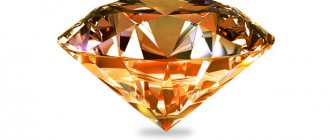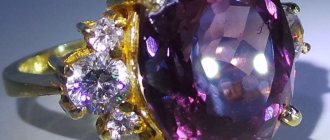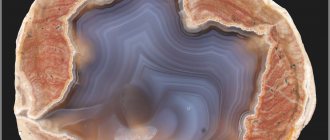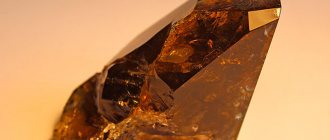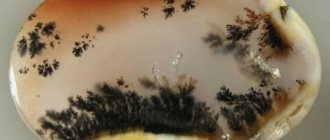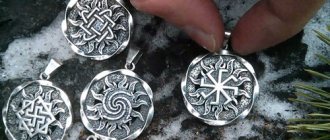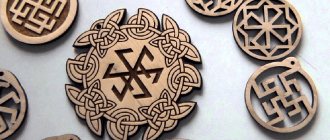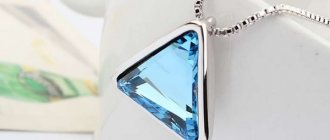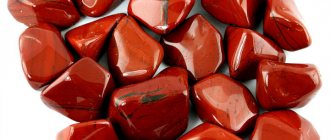Description
For every culture, these stones are a symbol of power, strength, and love. Decorations with them gave the owner self-confidence, attracted attention, and aroused respect. Since ancient times, the color red was considered protection against energy attacks and witchcraft.
Every woman who understood the power of the stone considered it the pride of her jewelry collection. And the combination of red gems and diamonds spoke of the refined taste of the owner and symbolized luxury.
Not only the rich, but also people of average income could purchase jewelry. The price depended on what class the red stones belonged to: precious, semi-precious or ornamental.
How to wear and care
Bracelet made of aventurine and aventurine glass
Caring for aventurine quartz is simple - avoid contact with hard objects (other stones, primarily diamonds and beryls, steel), wipe off dirt with a soft sponge dipped in a weak soap solution. It is best to store a stone or jewelry with it in a canvas or leather bag separately from other jewelry.
You need to wear the “gem of good luck” occasionally. The duration of wearing should not exceed a week. The power of this stone is most fully revealed on the waning Moon.
Precious
Ruby is considered the king of red gemstones. One of the most expensive, second only to diamond in hardness. A ruby with a rich blood-red color without defects is much more expensive than a diamond. Yakhont is one of the outdated names of the mineral. Opaque specimens are cheaper.
Ruby
The most expensive rubies are Burmese, their value is determined by their deep dark red color. Deposits have been discovered in the following countries:
- Tanzania and Pakistan;
- Thailand and Sri Lanka;
- Madagascar.
In Tanzania, rubies are mined, small in size, but with an amazing ripe raspberry color. Faceted crimson rubies dazzle with sparkling brilliance, making it impossible to take your eyes off them.
Each stone is unique due to the presence of various inclusions. Veined cracks do not always reduce the value of the crystal. A natural transparent ruby with the presence of a hazy “silk” is highly valued, but a large number of impurities deprives the ruby of its transparency.
Tourmaline
It has many colorful shades that appear in daylight. Legend says that tourmaline can hide its beauty or reveal all the facets of its unusual color. It gives a person inner peace, spiritual harmony, and the desire to understand the world.
Tourmaline with a red tint is considered the most valuable, but there are specimens that combine several colors at once. The most unusual of them is watermelon, in which red smoothly turns into bright green. From a distance, such a stone resembles a cut watermelon.
Spinel
A mineral that is in demand among jewelers. The countless color options for spinel make it a desirable purchase for gem connoisseurs. Previously, rulers ordered cut stones to be inserted into royal jewelry. When examining the exhibition rubies, it turned out that many of them turned out to be red spinel.
The effect on a person is not aggressive, it does not put pressure on the owner with its energy, but brings happiness, prosperity, and long-term love.
Topaz
The Ural miners nicknamed the Siberian diamond a crystal with blue, crimson, red, violet and pink colors. There are finds that are amazing in size - over 25 kg. The largest wine-colored stone, weighing 110 kg, was found in Ukraine.
Pink-red topaz is many times more expensive than other colors. The main difference is pleochroism, that is, the flame effect along the edges of a faceted mineral.
The red gem is considered the patron of sea travelers and is capable of pacifying the elements. It also has a calming effect on humans.
How to spot a fake
Unfortunately, fake aventurines are far from uncommon on the market. Most often, “aventurine glass” containing additives is passed off as a real stone: shavings of non-ferrous metals, primarily copper.
It’s easy to distinguish imitation:
- Firstly, it is bright and contrasting. A very rich color, especially red-brown, black or blue with bright, clearly visible sparkles, is a sure sign of a fake glass.
- Secondly, the natural mineral has a greasy, rather than glassy, sheen and exhibits an iridescent effect. Synthetic is devoid of these effects.
- Thirdly, in natural stone the arrangement of inclusions of a different color is chaotic - somewhere there are fewer of them, somewhere there are more. In imitation they are ordered.
- Fourthly, genuine aventurine is harder than glass. It scratches glass like a ruby or diamond, but it itself, on the contrary, is difficult to scratch.
- And fifthly, a natural gem, even polished, is rough to the touch. It has a porous structure and feels warm in the hand. It may have flaws and defects, but fakes are always perfect.
True aventurine
According to statistics, the most frequently counterfeited stones are blue, cherry, brown and black. Less commonly - green, white and pink.
Semi-precious
Gems often found in nature are considered semi-precious. This definition does not detract from their merits; they are simply more accessible and are more often used for making souvenirs. The cost of semi-precious stones depends on the hardness indicators: the higher it is, the more expensive the crystal.
Pomegranate
It got its name for its juicy garnet color. This is a mineral of igneous origin. In ancient times it was called frozen drops of dragon blood. The play of colors divides it into types:
- almandine - shades from pink to rich cherry;
- pyrope - dark red with a black tint.
With its beauty, garnet attracts unscrupulous jewelers, who use it to imitate expensive red gems. Basically, for translucent and opaque semi-precious cameos, processing using the cabochon technique is used. Transparent specimens shine when cut with diamonds, creating an amazing shine. Among warriors, the pomegranate was considered a talisman that restored strength and calmed nerves. Causes passion in lovers.
Zircon
Cut zircon is often passed off as a diamond. Playing with glare and tints of light, it is able to collect all the rays passing through it in a sheaf. This is the main coincidence with the noble diamond. Due to its wide range of colors, zircon is falsely called diamond, sapphire, amethyst and is passed off as more expensive stones.
Dark red zircon is considered the patron saint of the fair sex. He gives his owner attractiveness and sexuality. Products containing zircons of different shades, set in platinum or gold, look elegant.
The value of gray
Psychologists have studied the properties of the gray scale and associate it with wisdom, life experience, and consider it a status measure that gives a person faith in his own abilities. The color belongs to intellectual and secretive people - “gray cardinals”. The stone concentrates attention when concluding business transactions, promotes restraint, sophistication, and coldness.
When creating jewelry masterpieces, gray additions are not avoided due to their compatibility with almost all colors. All shades from pearl to dark steel are suitable for wearing with any clothing.
Men and those over 35 can safely accessorize their clothes with cufflinks, rings, and tie clips with light and dark inserts.
Bankers, owners of large companies, and government officials often turn to building materials of this range: gray is a symbol of serious work.
Supporters of alternative medicine choose gray stones for massage, meditation, and therapeutic procedures.
Ornamental
Ornamental stones are distinguished by their availability to the general population. Not having a high cost, they are also endowed with natural energy, the ability to positively influence the human body, protect it and simply delight the eye with amazing beauty.
Jasper
A stone with the largest palette of shades. Nature decorated jasper with intricate designs, using numerous variations of impurities of magnesium, iron, chlorine, sulfur, magnesium, and aluminum. The name translates as “variegated”; the color can vary from bright red to black-violet. There are also completely white specimens.
A variety of jasper is heliotrope, the bright green color of which is diluted with red drops that look like blood.
The powerful energy of jasper is used in magical rituals. Beads and rings made of red gems set in silver look very impressive. Jasper is used to make beautiful frames for mirrors and watches, caskets, souvenirs, and vases.
The stone is considered the patron saint of people who strive for knowledge, and jasper of a dark red hue can protect against the evil eye.
This is one of the few ornamental stones that cannot be counterfeited due to the complexity of processing.
Cornelian
A variety of chalcedony, translucent burgundy mineral, heterogeneous structure. Formed from volcanic rocks, the best specimens are found in Siberia.
Beads, rings and earrings made of carnelian are distinguished by inexpensive frames made of silver or cupronickel. The gem is considered a talisman for the home and a reliable talisman. It makes the owner peaceful, soft, and compliant.
Coral
The mineral, which was born in the depths of the ocean, is endowed with fabulous beauty. Fragile, with a rich red color with tints. For millions of years, fossilized representatives of the deep sea created bizarre figures of coral, filling it with a variety of colors.
The gem helps a person gain longevity and wisdom. Translated from Greek, coral means “oracle”, an assistant to soothsayers and sorcerers.
In the Middle Ages it was considered a sign of wealth, and now it is the most common ornamental mineral. It is used to make inexpensive jewelry, gifts, souvenirs, and as decor for interior items.
Synthetic stones
Conventionally, cubic zirconia and alpanite can be classified as red minerals. These are artificial crystals grown in laboratory conditions. Manufacturing technology allows you to obtain samples of any color, including red. The stones do not have any special energy, but they look beautiful in jewelry.
Healing qualities
You can restore order in the human body by treating individual areas with suitable minerals:
Pearl is an anti-stress, calming stone. Improves the condition of the eyes, kidneys, liver, relieves headaches and blood pressure.
Agate calms, relieves pain, cleanses the stomach and intestines. Moonstone is a friend of heart patients, protects against unstable nervous conditions, and is responsible for the gastrointestinal tract and genitourinary area.
Hematite, crushed into powder, is used to treat wounds and relieve bleeding. Inhibits, prevents the development of cancers, tumors, ulcers. Helps kidney patients with pain in the bladder area.
Granite relieves suffering in the lungs and bronchi, and reduces fever.
All types have a positive effect on the human body, cleanse waste, toxins, remove cholesterol, promote weight loss, and improve physical health.
Properties
The properties of gems depend on their chemical composition, the amount of impurities and inclusions. The color red has strong energy; its radiation gives a person strength, confidence, and passion.
Gemstones with red color, in addition to aesthetic ones, have many other advantages. The energy effect manifests itself in this way:
- stimulates the functioning of the diseased organ if you regularly massage the skin over it with a stone in a clockwise direction;
- has a beneficial effect on hematopoiesis;
- fills with strength and energy;
- awakens the desire for life.
- improves metabolic processes;
- normalizes appetite, memory;
- stimulates brain activity;
- increases performance.
In magic, the mysterious red topaz gained fame as the “stone of revelation.” It is endowed with magical properties: magicians, sorcerers, and psychics carry it with them as an amulet.
Only natural stones have the ability to transmit energy. Most red minerals are considered strong love talismans. They will help attract the attention of the opposite sex, protect against betrayal, restore passion and maintain family happiness.
The magic of gray stones
They are all endowed with magical qualities. In addition to the general ones, each stone has its own magical properties.
Main features
Positive Impacts:
- Gives determination to anyone who suffers from uncertainty.
- Relieves irritability, anger, bad mood.
- Provide assistance in self-realization.
- The best assistants for students, researchers, and often traveling.
Gray color is obtained by merging black and white. In life he is also dual, working in both areas. Positively affects well-being, inner world, character.
Products with red gems
Most stones with this color have sufficient hardness necessary for jewelry processing. An unlimited range of colors allows you to create a product to suit every taste and budget. Therefore, jewelry made from precious, semi-precious and ornamental minerals of this color are top sellers in jewelry stores.
If the gemstone has a deep red color, a matte pearl set in gold would be a good complement. The mineral looks gorgeous in combination with white diamonds. The less saturated red colors of ornamental gems will be favorably set off by a frame made of white gold, silver or cupronickel.
Beads, brooches and earrings made of jasper, coral and carnelian are in great demand. From these minerals a talisman is selected according to the zodiac sign, which will protect its owner.
Jewelry made from red stone is a good purchase; such a talisman will attract a flow of positive energy, all that remains is to direct it correctly.
Types of stones
Among precious brethren they make up a small part, in the field of construction - a large part.
Precious
Diamonds and pearls are of jewelry value.
Gray diamond is common among colored diamonds: almost all others have a smoky tint. Saturation ranges from light gray to richly saturated. When cutting, diamonds are given different shapes. The carat is valued at approximately $6,000.
Gray natural noble pearls, valued more than classic white pearls, come from Tahiti. The first line of the list of jewelry made from gray pearls (there are bluish and pink shades) is occupied by Mikimoto. An exquisite brand that is affordable for wealthy segments of society.
Semi-precious
These representatives are more common.
- Topaz is a plain gray color from Canada that is not particularly expensive. By irradiation, a blue tint is obtained, suitable for creating jewelry.
- Selenite is a moonstone of a silvery, bluish tint; it can change tide when the phases of the night star change.
- Rauchtopaz is quartz of smoky or slightly brown shades.
- Tourmaline is a darkish stone suitable for the stronger sex and ladies over 40 years old.
- Rutile (hairy) - slightly red or yellow-golden in color. Being rare, it is valuable for jewelers.
- Rutile quartz - mass is determined in carats, grams.
Ornamental
There are many varieties:
- Hematite is a type of iron ore with an intense gray color. Gives water a red color, which is why it is called bloodstone.
- Hornwort is a type of smoky, grayish-green jasper. Occasionally, options with stripes and veins are possible, the beauty of which allows them to become a decorative and ornamental material.
- Agate – faint gray, greenish, steel, white-brown with grey, pale, uniform shades. The best shade comes from Africa - grey-black Botswana. It is valued in carats compared to the rest, which are valued in grams. A recognized ornamental stone for jewelry boxes and room decoration.
In design and construction
The following minerals are most often used as construction and decorative materials:
Flint purifies water even in large volumes and is a collector's item.
Sandstone contains quartz, which makes it highly durable and can withstand temperature changes and exposure to fire.
Spar is found on the planet more than any other stone and is widely used in construction.
Limestone is involved in industrial production.
Favorites for gray stones are granite and marble.
Artificial
Among the created analogues, two categories can be distinguished:
- copies of diamonds, sapphires, rubies used in jewelry - cubic zirconia, glass-ceramics, moissanites;
- Substitutes for granite, gabbro, and marble that are common in construction work.
Musassanite is a cheap, but high-quality and beautiful analogue used for making jewelry. Due to its properties, it is widespread and very valuable.
Magical
Represented by the stone monuments of Stonehenge and Easter Island, the ritual tenghirs are made of hardened sandstone. In Russia you can see similar sculptures in the Vladimir region.
Another mineral in this group is latte, which is composed of limestone.
Cacholong in history
Cacholong is a stone known to mankind for thousands of years. It was highly valued in eastern countries. Preference was given to the dairy variety.
Origin of the name of the mineral
Scientists are not sure of the origin of the modern name, but there are two versions:
- Kalmyk, from the words “river” and “stone”;
- Mongolian, from the word “beautiful stone.”
The Turkic name "kashilon" was transformed into a modern word in India after the conquest by the Great Mongols. The Turks believed that opal appears if a drop of a sacred river falls to the ground. The Hindus transformed the legend to suit their beliefs.
Semi-opal has been known to mankind for thousands of years
Cacholong in the culture of different countries
Ancient people highly valued cacholong. Hindus believed that the milk of a sacred cow falls from the udder and hardens into stones. Amazing gems appeared only in cows that lived in Buddhist temples. Women believed that miraculous stones simplified childbirth.
The Egyptians associated the gem with the god of fertility, the bull Apis. The deity appeared from a moonbeam and symbolized longevity and impeccable health.
The Mongols associated the whiteness of the breed with the sacred lotus. The stone symbolized purity and innocence.
The ancient Romans were the first to make figurines, boxes, and dishes from cacholong. From ancient times to the present day, cacholong has been used to make jewelry and home decor. In the Middle Ages the material was used in Florentine mosaics.
Europeans appreciated the beauty of the sacred cow's milk in the 18th century. Wealthy people bought interior decorations and home decorations made from minerals. These items had social significance and emphasized the status of the owner.
Pearl agate deposits are places where dense forests once grew
Physico-chemical characteristics
Geological descriptions of the mineral mention the following parameters:
- hardness 5.5-6.5;
- high fragility;
- opacity;
- porosity;
- ease of processing.
The breed is called:
- Kashilon;
- river stone;
- pearl agate;
- a beautiful stone;
- semi-opal.
In some legends the name “Milk of the Sacred Cow” is found.
Structurally, the mineral is considered a hydrate of silicon dioxide. The rock is a combination of opal and chalcedony, similar in structure, capable of merging over time into a single mineral formed by calcium and impurities. Cacholong is harmed by water. Its effect is more destructive, the higher the percentage of calcium carbonate in the sample. Moisture is the source of the yellowish tint that depreciates the specimen.
Cashillon beads are damaged by water
We check the cacholong for authenticity
Only natural stone has value, magical, healing properties. To determine the authenticity of a sample:
- Place the specimen in direct sunlight. Natural stone has a dull shine and barely noticeable shine.
- They touch the stone with their tongue. The sensation is reminiscent of touching iron - a slight sticking.
- They conduct an experiment with water. The mineral is hygroscopic. When kept in moisture for a long time, it swells slightly. Possible damage to the structure.
- Examine the object from different angles. Natural semi-opal glitters beautifully, the radiance changes depending on the lighting. Plastic and glass fakes look the same under any conditions.
It is impossible to imitate the original mesh pattern formed by black veins.
The chalcedony variety is counterfeited more often. Doubting the authenticity of the specimen, they show it to a jeweler for expert evaluation.
Sometimes cacholong is made:
- howlite;
- marble.
Howlite is identified by spots and veins. The surface of the cacholong is homogeneous. The milk of the sacred cow differs from marble in its cryptocrystalline structure.
When checking a specimen of atypical coloring, be sure to inspect the area near the hole. It makes it easier to determine if there is a layer of paint.
Cacholong is characterized by a translucent whiteness, uncharacteristic of other breeds. The surface of the sample is soft, matte, reminiscent of enamel, porcelain.
Identifying a fake pearl stone is not easy
